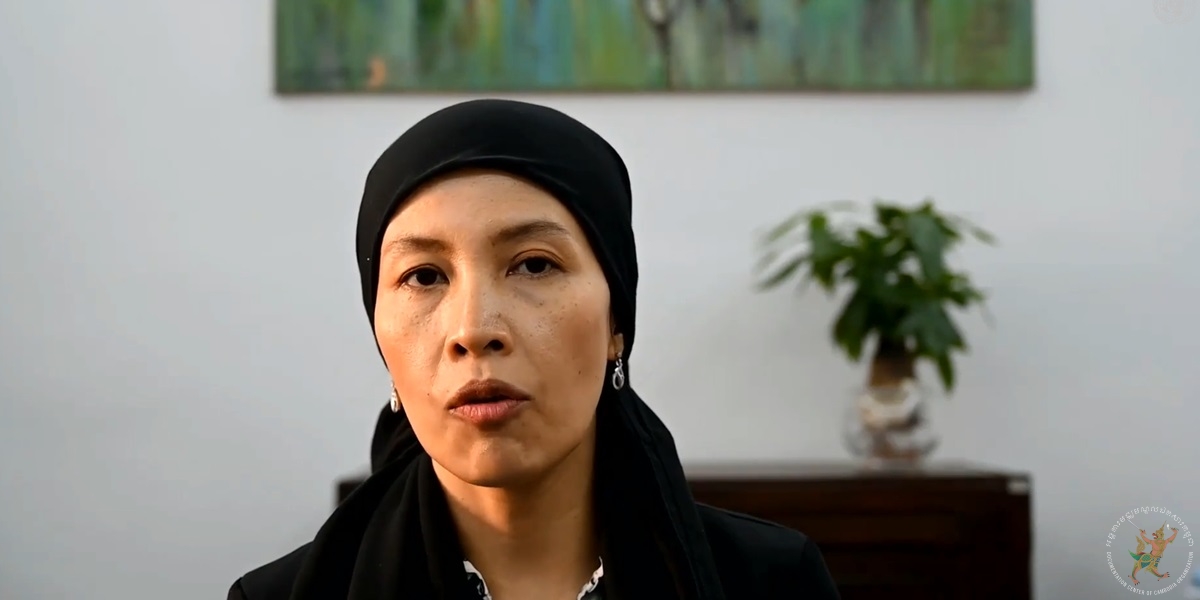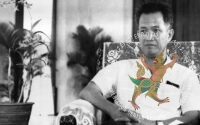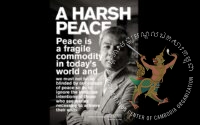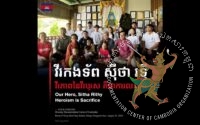Strengthening Educational Responses to the Prevention of Genocide

On the special occasion of the 75th anniversary of the Convention on the Prevention and Punishment of the Crime of Genocide Organized by United Nations Office on Genocide Prevention and the Responsibility to Protect (R2P), from Cambodia, Farina So, Principal Deputy Director of the Documentation Center of Cambodia gave her speech on the Strengthening Educational Responses to the Prevention of Genocide.
Over 75 years ago, Raphael Lemkin created the word “genocide” to describe the heinous, deliberate destruction of mankind that had been committed in countless episodes of history. This word carried important meaning that would evolve into the Convention on the Prevention and Punishment of Genocide that the international community commemorates today. The legal definition of genocide reflects the international community’s agreement on the crime of genocide and mankind’s responsibilities to act to prevent and punish these crimes. However, reflecting upon the 75th anniversary of the Convention on the Prevention and Punishment of the Crime of Genocide, it is hard not to realize that so many of the obligations the Convention imparts remain unfulfilled today. Indeed, the words of the Convention retain value only insofar as they are realized in human action, and the global community has unquestionably great space between the words in the Convention and the commitments as demonstrated on the ground.
Between 1975 and 1979, Cambodia suffered extraordinary destruction of its civilization. The Khmer Rouge regime attempted to implement a radical Maoist form of communist ideology, which was implemented through a spectrum of horrific policies and practices that defy the imagination. Cambodian people were imprisoned, tortured, and killed. Ethnic and religious communities were targeted, and the entirety of the Cambodian people were terrorized by the most egregious forms of inhumanity. It is estimated that over 2 million out of 7 million Cambodian people died during the Khmer Rouge regime (1975-1979). The Extraordinary Chambers in the Courts of Cambodia (a United Nations-Cambodian court) ultimately found that senior leaders of the Khmer Rouge committed war crimes and crimes against humanity, in addition to genocide against the Vietnamese and Cham Muslim people. Even though the genocidal Khmer Rouge regime fell over forty years ago, one can still see the significant effects of this period in Cambodia’s history and its people from mental trauma and physical disabilities in survivors to the damage done to the civil service, civil society, and cultural institutions that have to this day not fully recovered.
The Documentation Center of Cambodia (DC-Cam) represents the world’s largest rare archive of historical artifacts and documents of the Khmer Rouge regime and, in coordination with the Royal Government of Cambodia and the crucial support from the United States Agency for International Development, it has been implementing its genocide education programme (also known as atrocity crimes education) across the country for nearly twenty-years—supporting the 5 million survivors of the Khmer Rouge period, the next generation, and a country still struggling with its horrific past. DC-Cam’s grassroots work with survivors has given it an informed perspective on the meaning of the Genocide Convention.
Many Cambodians still ask the question why did Cambodian (Khmer) people kill Khmer? In nearly every public forum, training, or engagement event, this question comes up, not only from the youth who were born decades after the genocide, but even from survivors. It is a legitimate question that has no complete answer because no matter how many stories are collected, research conducted, or analysis completed, the question cannot be satisfied by human analysis or conclusions of the past. Questioning the past is crucial; in fact, it is paramount. But studying the past must be part of a demonstrated commitment to the present and future.
Atrocity crimes education in all its forms, including formal and informal education, is atrocity crimes prevention. Education is the single most efficient and effective way of preventing the conditions and catalysts to atrocity crimes in the future. Successful education requires hard work by governments as much as civil society. In addition, education requires resources and a demonstrated commitment that exceeds what mankind has historically given to response, prosecution, and punishment of these crimes.
Education that centers on critical thinking, self-reflection, and empathy can open up new conceptions of individual and collective identities and give people tool to question themselves, their institutions and their world. Education can be the next great enabler of mankind’s pursuit of peace, freedom, and justice.
Education also requires imagination. Educational curricula focusing on atrocity crimes prevention should include exercises in the imagination that challenge learners to think about how society could have been different if atrocity crimes had not occurred, how society would be affected if they occurred today, and how prevention looks like in the future when we can imagine a world that truly lives up to the statement “Never again.”
DC-Cam calls on all states to integrate atrocity crimes education into all mandatory high school curricula at the national level. All military forces should also be required to include atrocity crimes education as a required component for professional military education of officers and senior leaders. And most importantly, atrocity crimes education should be written into all international development policy—requiring that bridges, roads, and other development aid are conditioned on the implementation of a credible atrocity crimes education programme. Conversations about education should not be incidental to post-conflict development, they should begin with these issues, if only because international aid is the primary vehicle for building in the components and mechanisms for preventing atrocity crimes in the future. The words of the Convention demand action, not only in the interest of complying with law, but also for ensuring our promise to future generations.
Speech by Farina So
December 8, 2023
Link: https://webtv.un.org/en/asset/k1z/k1z63jopz2




